辰山植物园矿坑花园,上海,中国
辰山植物园矿坑花园,上海,中国
Quarry Garden in Chenshan Botanical Garden, Shanghai, China, 2009
项目设计:朱育帆,姚玉君,孟凡玉/北京清华同衡规划设计研究院有限公司,清华大学建筑学院
Project Design: ZHU Yufan, YAO Yujun, MENG Fanyu/Beijing Tsinghua Tongheng Urban Planning and Design Institute Co., Ltd. + School of Architecture, Tsinghua University
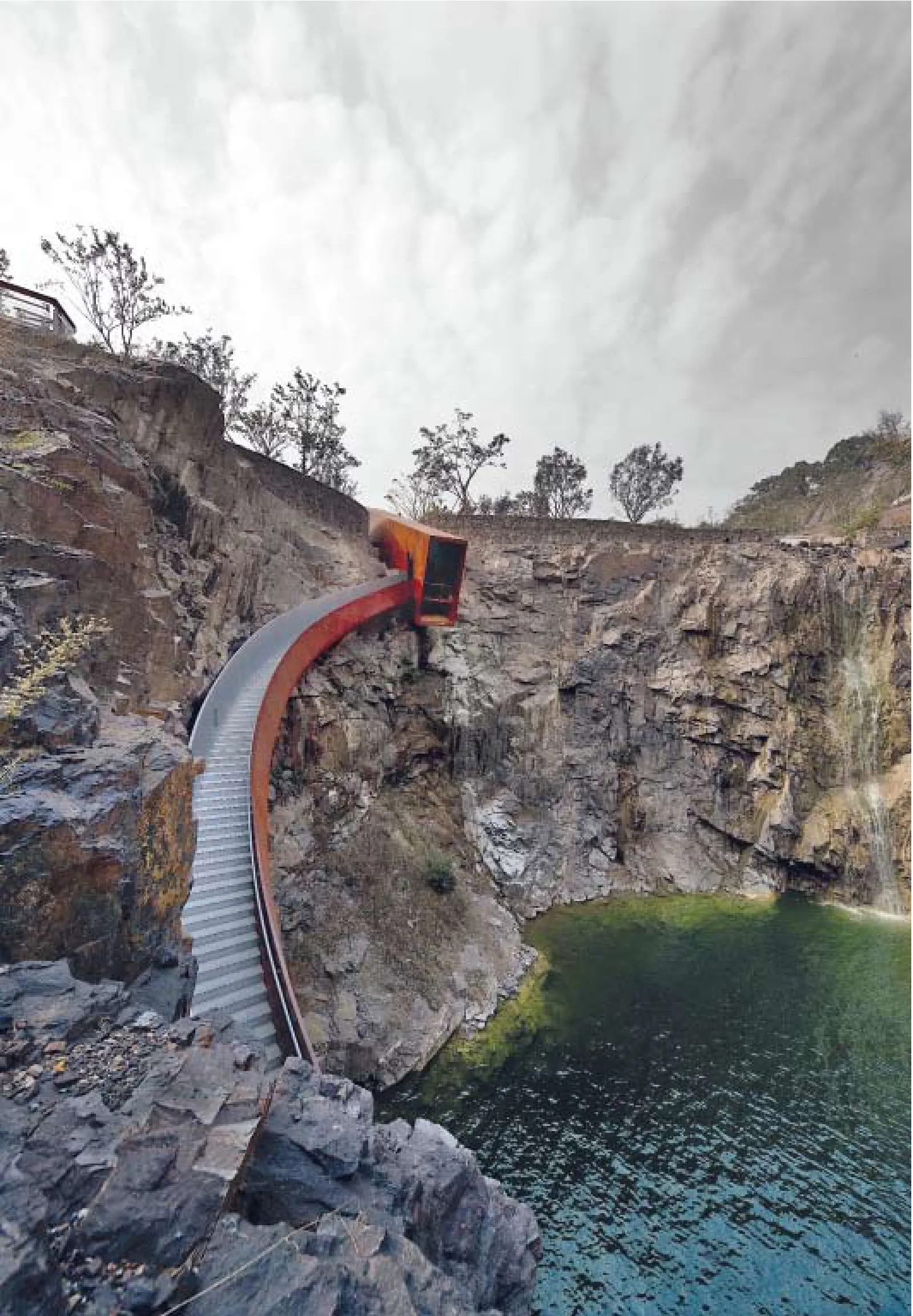
1 远景/Distant view
上海辰山植物园位于松江西北郊,因园中心之辰山而得名,辰山历史上为上海名胜之一,位 “九峰三泖”之列,留下无数文人墨客的踪迹。2007年上海新植物园最终选址辰山,并计划将辰山采石坑改造成为以修复为主题的园艺花园。大自然被人类破坏之后经过修复而呈现的自然状态被称为“第四自然”,设计师的策略和理念并不是试图去掩盖这种“创伤”,而是诚实地将其视为一种财富和第四自然的基本属性,通过建构一套人工路径和构筑系统直接植入采石废弃地的方式,使游者获得了拓展性的和真实性的景观体验。设计在充分尊重场地特性的前提下,采用最小干预的介入方式,使得场地内原有事物和新置入的设计事物产生良性的并置关系,以此来表达对自然和历史文脉的尊重。
Chenshan Botanic Garden, named after the hill in the garden center, is located in the northwest of Songjiang District, Shanghai. Chenshan Hill, one of scenic spots in Shanghai, is included in the list of "Nine Peaks and Three Ponds" and has attracted innumerous poets and literateurs. In 2007, the location of the new botanic garden was finally decided to be on Chenshan Hill. Plans were also made to transform the quarry into a horticulture garden with a restoration theme. The natural state restored after human destruction is called "the fourth nature". The strategy and concept of the design were not to conceal the "wound", but to regard it as a kind of wealth and the basic attribute of the fourth nature. The direct implantation of the abandoned quarry into the garden through a man-made route and building system provides visitors with a real and imaginative experience of the landscape. Under the premise of fully respecting the original site features, the design adopted the method of minimum intervention so that both the original and the newly-arranged objects could coexist harmoniously, representing respect for nature and history.
项目信息/Credits and Data
客户/Client: 上海辰山植物园/Shanghai Chenshan Botanical Garden
设计团队/Project Team: 朱育帆,姚玉君,孟凡玉,王丹,严志国,翟薇薇,郭畅,孟瑶,张振威,冯纾苨,孙建羽,何晓洪,崔爱军/ZHU Yufan, YAO Yujun, MENG Fanyu, WANG Dan, YAN Zhiguo, ZHAI Weiwei, GUO Chang, MENG Yao, ZHANG Zhenwei, FENG Shuni, SUN Jianyu, HE Xiaohong, CUI Aijun
地点/Location:上海松江辰花路/Chenhua Road, Songjiang District, Shanghai
建筑面积/Floor Area: 43,000m²
设计时间/Design Period: 2007-2009
摄影/Photos: 陈尧/CHEN Yao

2 落日余晖洒在锈钢板墙上/The sunset shinning on the stainless steel wall

3 总平面/Site plan
1 镜湖/Mirror lake
2 密园水塔/Water tower
3 保留防空洞出口/Kept defense tunnel
4 山体内隧道/Underground tunnel
5 山径/Road
6 山瀑/Waterfall
7 望花台/Flower-seeing platform
8 观景平台/Viewing platform
9 钢筒/Steel tube
10 栈道/Trestle path along cliff
11 一线天/The strip of sky
12 浮桥/Floating bridge
13 山洞/Cave
14 深潭/Deep pool

4 远景/Distant view
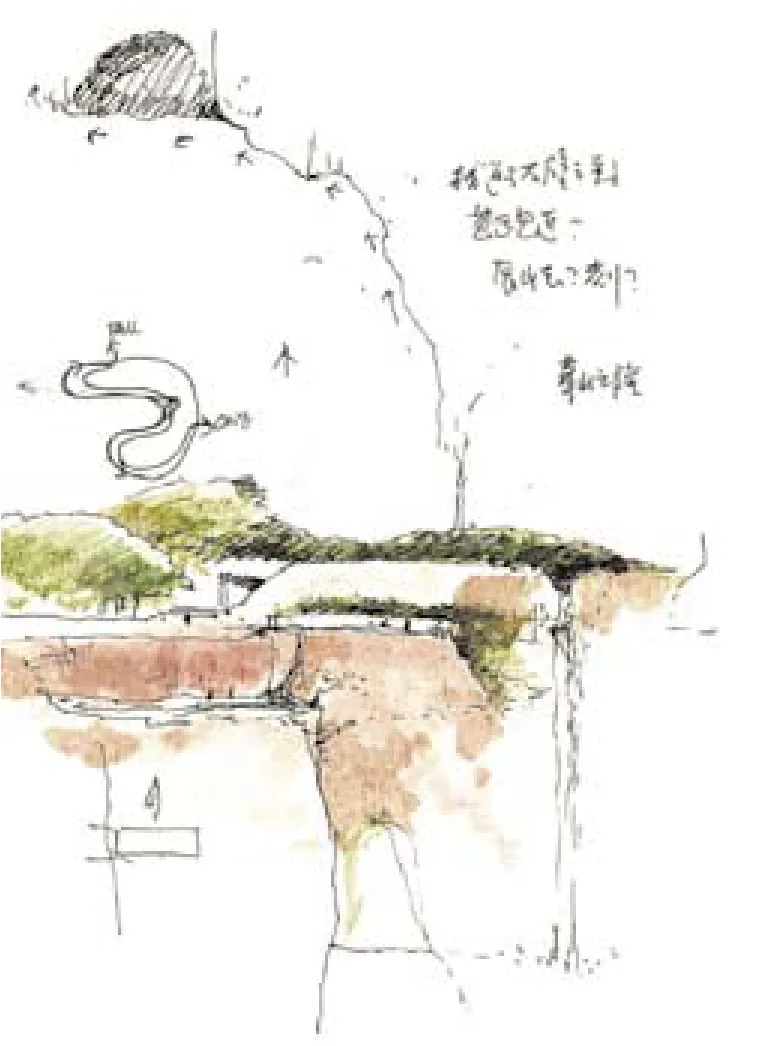
5 草图/Sketch
评委评语
上海辰山植物园矿坑花园以对自然的敬畏态度,通过极少的人工干预,进行了对工业痕迹的举重若轻的修复,实现向自然的回归。项目建成以后,通过一条恰当的移动路径,营造了人与自然的积极互动,不仅提供了一系列令人印象深刻的空间体验,更引导参观者对人与自然的关系进行更深刻的反思。项目将在中国当代建筑所面临的紧迫的环境持续与自然修复问题方面,为其他项目提供有益的参考。
Jury Statement
Based on the reverence for nature, the renovation project of the Quarry Garden in Chenshan Botanic Garden clears up the industrial traces with minimal human intervention, realizing a return to nature. Through a properly arranged route, a positive interaction between man and nature is established to provide visitors with an impressive experience of space as well as to induce them to think more profoundly over the relationship between man and nature. It will be a reference for other projects in the face of the urgent issues like environmental protection and nature conservation in contemporary China.
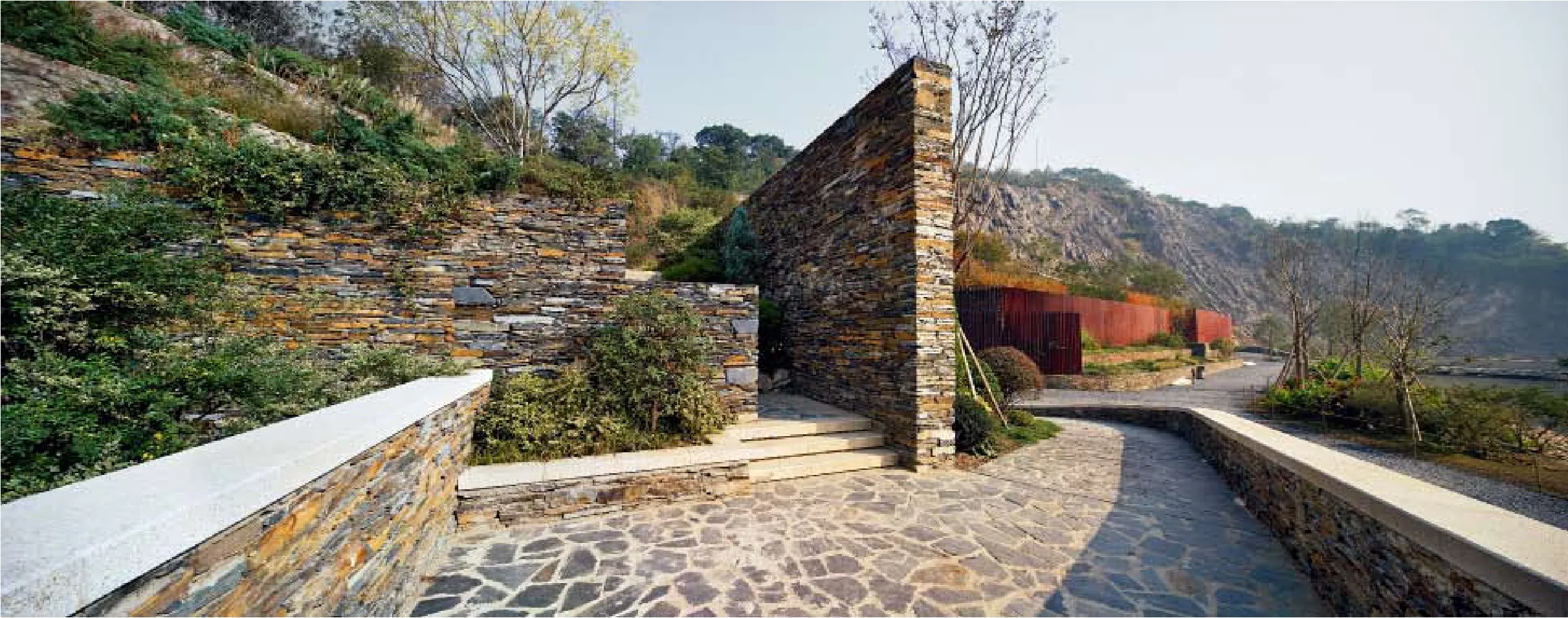
6 从坡道上台地/Climbing on terrace through ramp
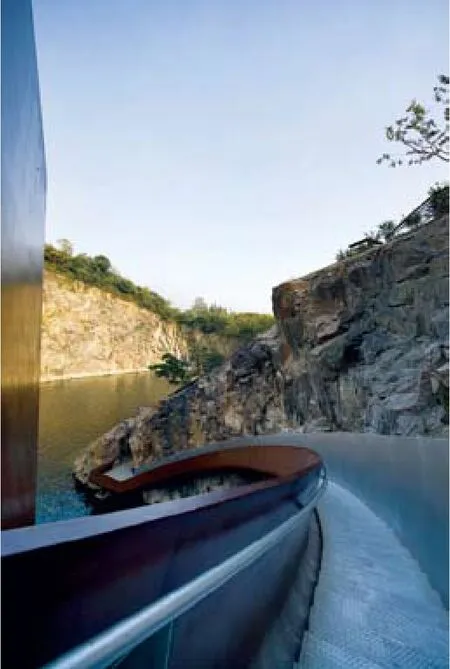

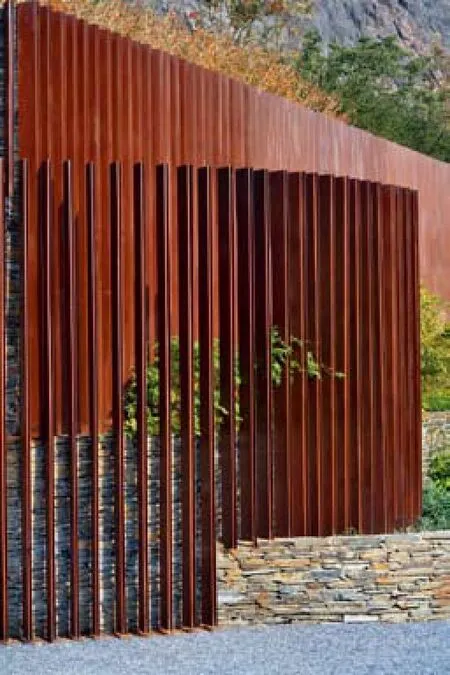
7-9 细部/Detail

